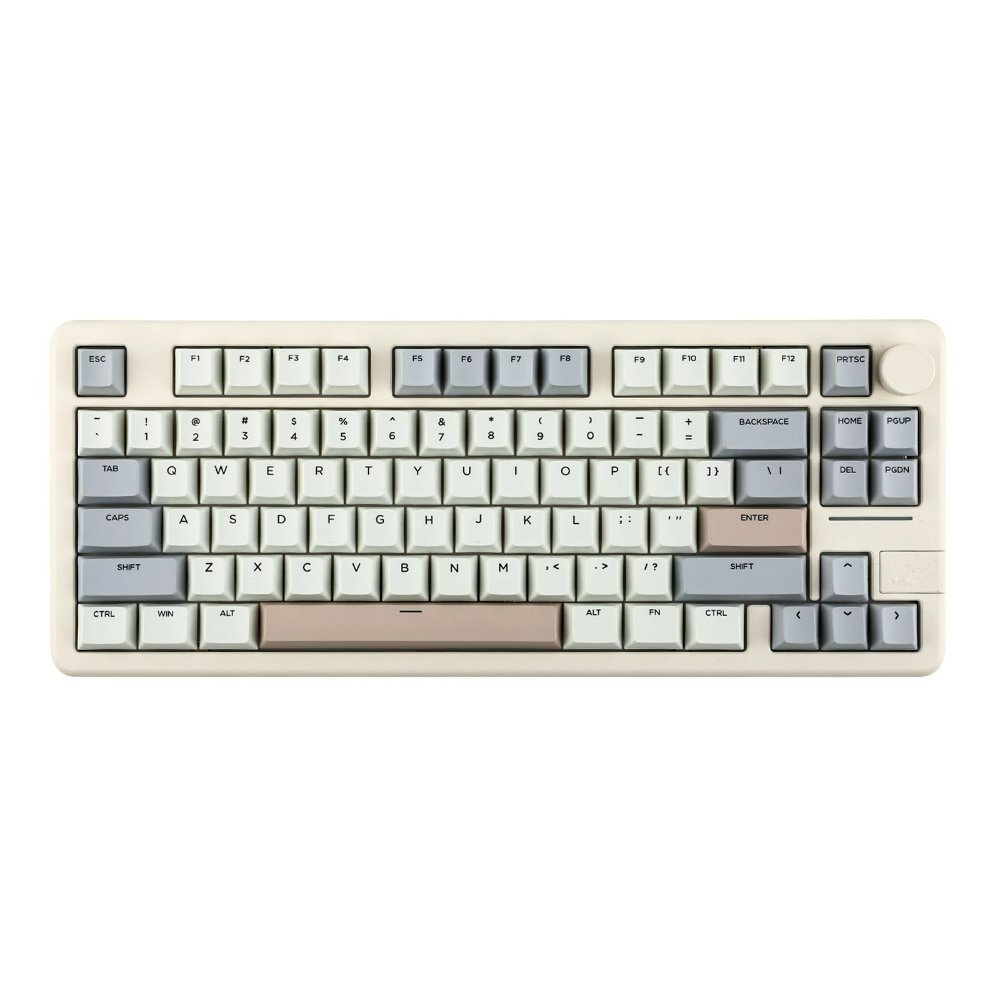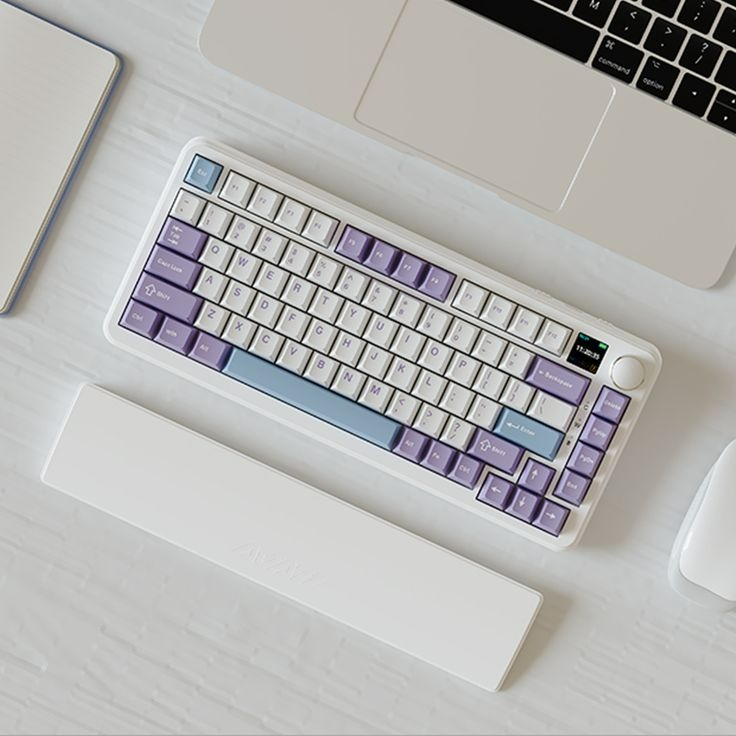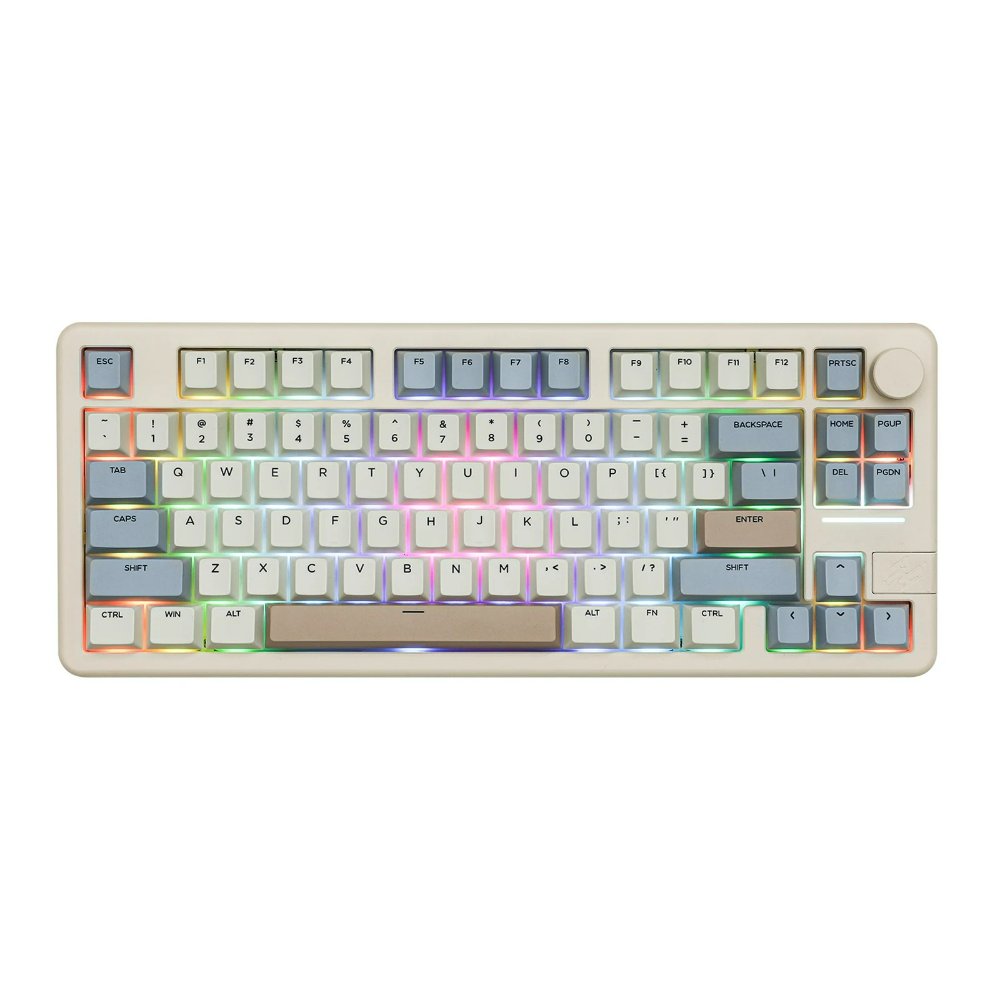The Evolution of 70% Keyboards
The journey of the 70% keyboard reflects a dynamic shift in user preferences. From the large, clunky keyboards of the past, a trend towards compact designs has taken hold. This evolution began with the trimming down of the full-size keyboard. The 70% keyboard took this a step further by reducing keys that were less frequently used while still retaining functionality. Innovations led to the minimization of the form factor, catering to a mobile and space-conscious consumer base.
The advent of wireless technology and changes in work habits also influenced the rise of the 70% keyboard. Now, it’s not just about saving space; it’s about having a tool that complements an on-the-go lifestyle. Tech enthusiasts and professionals alike embraced this shift, leading to a surge in the popularity of 70% keyboards. Not only do these keyboards meet modern aesthetic standards, but they also align with the minimalist and decluttered workspaces that many now seek. As the 70% keyboard continues to evolve, it stays true to its core – compact efficiency with no compromise on capability.

Defining the 70% Keyboard Layout
The term ‘70% keyboard’ defines a specific design in the mechanical keyboard landscape. Unlike full-size keyboards, the 70% variant strikes a balance between space and utility. Here is what makes a keyboard fit into the 70% category:
- Key Count: A 70% keyboard typically has around 70% of the keys found on full-size keyboards, equating to approximately 65 to 68 keys.
- Layout: It retains most alphanumeric keys and the essential function row. However, it forgoes the numeric keypad, most navigation keys, and sometimes, even the function row.
- Size: The reduction in keys results in a smaller footprint, making the 70% keyboard a compact choice for minimalist setups.
These characteristics underscore the core identity of a 70% keyboard: a compact layout designed to serve the needs of users who require mobility without sacrificing essential typing functions. For tech enthusiasts who navigate between different workspaces, the 70% keyboard is a versatile companion that aligns with the minimalist aesthetic while maintaining typing efficiency. Its distinctive layout continues to attract users looking for the sweet spot between portability and functionality.
Advantages of a 70% Keyboard Design
The 70% keyboard comes with multiple advantages that resonate with the modern user. Here’s a concise look at the benefits this layout brings to the table:
- Space Efficiency: The reduced footprint of these keyboards frees up desk space for a cleaner, more organized workspace.
- Portability: Their smaller size makes them easy to pack and transport, ideal for people who work from different locations.
- Aesthetics: The compact design is visually appealing and aligns with minimalist decor trends.
- Functionality: Despite fewer keys, a 70% keyboard retains essential functions for typing and shortcuts.
- Less Finger Movement: Users may find they have to move their fingers less compared to using a full-size keyboard, potentially increasing typing speed.
- Reduced Clutter: With fewer keys, there’s less chance of clutter from seldom-used keys cluttering the keyboard area.
These advantages highlight why 70% keyboards are gaining traction among tech professionals, writers, and those with an eye for sleek, efficient design.

Comparing 70% Keyboards with Full-size and Tenkeyless Variants
When exploring keyboard choices, it’s essential to understand how the 70% keyboard stands out. It’s a middle ground between the full-size and the tenkeyless models. Here are the key differences:
- Size: Full-size keyboards include all standard keys, including a numeric keypad. A 70% keyboard is much smaller, omitting the numeric pad and some function keys. Tenkeyless keyboards are in between, lacking only the numeric keypad.
- Keys: A full-size has 100% of the keys, tenkeyless has roughly 80%, and the 70% keyboard has about 65 to 68 keys.
- Desk Space: The compact 70% keyboard saves more desk space than the tenkeyless and certainly more than the full-size, which can be quite large.
- Portability: Full-size keyboards are less portable due to their size. Tenkeyless keyboards are easier to carry around than full-size but still larger than the 70% variant.
- User Preference: Full-size keyboards suit users who rely on the numeric keypad. Tenkeyless appeals to those who want a smaller keyboard but can’t do without the function keys. The 70% keyboard targets users who prioritize space-saving and less finger movement.
- Typing Experience: Typing on a 70% keyboard could be faster due to less finger travel. Full-size users might prefer the spread-out layout, while tenkeyless users enjoy a balance of space and functionality.
In summary, choosing between these keyboards depends on your needs for space, portability, and specific key functions. The 70% keyboard shines for those who love compact, efficient designs and can adapt to having fewer keys.
Popular Models of 70% Keyboards in the Market
With the rise of compact keyboards, several 70% keyboard models have emerged as frontrunners in the market. These models have gained popularity for striking the right balance between size and functionality. Below are some of the market’s most sought-after 70% keyboards:
- Vortexgear Race 3: Known for its high build quality and PBT keycaps, this model is a durable and stylish choice.
- Keychron K6: Offering wireless connectivity and a hot-swappable option, the K6 is versatile for various users.
- Ducky One 2 SF: This keyboard is praised for its typing experience and vibrant RGB backlighting.
- Anne Pro 2: A favorite among enthusiasts for its compact design and Bluetooth capability, making it perfect for on-the-go use.
These models are just a few examples that cater to users looking for a mix of aesthetics, performance, and comfort. Manufacturers of 70% keyboards often focus on providing a mechanical switch variety to cater to different typing preferences and incorporate exciting features like programmable keys and custom lighting.
Adopting a 70% keyboard doesn’t mean a sacrifice in quality or experience. The options available in the market prove that you can have a smaller keyboard without foregoing the essentials that make for a satisfying typing experience. Each model offers nuances that cater to the individual preferences of the user, ensuring a wide range of choices for anyone interested in making the switch to a 70% keyboard.

Customization Options for 70% Keyboards
The world of 70% keyboards is not just about compact size; it’s also about personalization. Customization is a key feature that draws users to this keyboard size. These keyboards offer several options to make one’s typing experience unique and individualized. Here are some prominent customization features:
- Keycaps: Users can swap out the default keycaps for different materials, colors, and designs. This is a simple way to add a personal touch or improve the feel of the keys.
- Switches: Many 70% keyboards come with the option to choose between mechanical switch types. This allows for a tailored typing feel, whether one prefers a tactile bump, a smooth linear motion, or a clicky feedback.
- Programmable Layers: Some models feature programmable layers that enable users to reassign keys and create macros. This customization enhances workflow and efficiency, especially for power users.
- Backlighting: Customizable RGB or LED backlighting is common in many 70% keyboards. It adds aesthetic value and can also be functional for users who type in low-light conditions.
- Frames and Cases: Users can sometimes opt for different frame materials or custom cases to change the keyboard’s look or adjust its weight and sound profile.
- Cables: Detachable cables are not only convenient for portability but can also be customized. Braided cables, coiled cables, and various colors are available for further personalization.
These options ensure that the use of a 70% keyboard doesn’t compromise on individual preferences. Users can enjoy the benefits of a smaller keyboard while still being able to express themselves and tweak their typing experience to match their needs.
Ergonomics and Portability of Smaller Keyboards
The appeal of 70% keyboards extends beyond their compact form. Ergonomics and portability are two critical aspects that make these keyboards a preferred choice for many users.
Ergonomic Benefits of 70% Keyboards
Using a 70% keyboard can lead to a more comfortable typing experience. The smaller size means less reach is needed for mouse use, which reduces strain on the shoulders and arms. The compact layout prompts a more natural hand placement, potentially lowering the risk of wrist strain. Plus, the ability to easily adjust the keyboard position helps maintain a comfortable posture during long typing sessions.
Enhanced Portability for Mobile Users
For mobile professionals or anyone who works on the move, the portability of a 70% keyboard is a huge plus. It’s light enough to carry in most laptop bags and small enough to fit on cramped coffee shop tables or train tray tables. Whether it’s a quick edit at a café or coding in a co-working space, a 70% keyboard makes it easier to set up an efficient workspace anywhere.
The combination of ergonomic advantages and easy portability chiefly contributes to the popularity of 70% keyboards. They offer the convenience and comfort needed by users who are dynamic and value functionality in a sleek, space-saving design.
Future Trends in Keyboard Sizes and Functionality
As we anticipate the future of keyboard design, several trends are emerging in terms of size and functionality. Below, we delve into the potential directions keyboards, especially 70% keyboards, might take in the coming years:
- Further Size Reduction: While 70% keyboards have set a new standard, future designs may push the boundaries for even more compact sizes without compromising essential functions.
- Enhanced Wireless Capabilities: With the rise of mobile devices, the demand for wireless keyboards that easily sync across multiple platforms is growing. Future 70% keyboards may have improved connectivity options.
- Sustainable Materials: There is a growing push for eco-friendly products. Keyboards may soon feature biodegradable or recycled materials, reducing the environmental impact.
- Smart Integration: Keyboards might become more integrated with other smart home devices, potentially controlled through voice commands or with built-in AI.
- Customization Software: Software that allows for deeper customization of keyboard layouts and macros may become more advanced, giving users an unprecedented level of control over their typing experience.
- Health-Focused Features: Innovations aimed at reducing repetitive strain injuries could lead to built-in wrist supports or keys designed to minimize finger strain.
- Hybrid Models: The potential for hybrid keyboards, combining the portability of 70% keyboards with the functionality of larger models through expandable modules or slide-out sections, could emerge.
These trends point to a future where the 70% keyboard continues to evolve, blending the desire for minimalism with technological advances that enhance the user experience. As innovation progresses, keyboards will not only become more efficient and stylish but also more adaptable to the changing needs of users around the world.